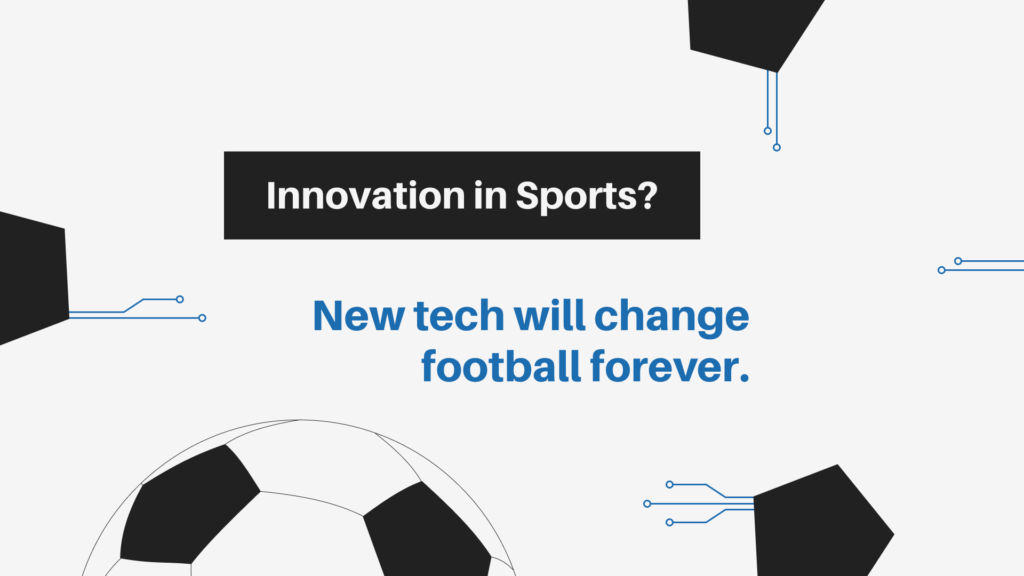New technology has disrupted seemingly every aspect of our lives.
During the Covid-19 lockdowns in 2020, everyones’ lives changed in the blink of an eye. How everyone worked, communicated, and traveled is drastically different from how they were done back in 2019.
Much of the technology in the world today would have been unthinkable just a few decades ago. They have changed and disrupted practically everything in the world.
And in sports, in particular, innovations are changing the way games are played.
From revolutionary player-tracking technology to the controversial Video Assistant Referee (VAR), innovations are redefining how football teams train, how matches run, and how fans experience the sport.
Ball-tracking tech
FIFA has been testing both sensor and optical ball-tracking technology that allow for the real-time transmission of accurate locational data from the pitch directly to analysts, data platforms, and broadcasters.
This technology also captures other data automatically such as team possession, ball speed, shot distance, goal kicks, offsides, and more.
The availability of this data will be valuable in all aspects of the game, from helping referees make crucial decisions to recreating the action on the pitch with the help of AR technology.
Adidas launched the first-ever FIFA World Cup Official Match Ball that integrates a ball-tracking sensor. It was first used in the 2022 Qatar World Cup.
The system uses a set of stadium-mounted antennas together with Kinexon’s integrated ball-tracking sensor, to transmit real-time movement and positioning data of the ball. According to Adidas and Kinexon, the sensor provides this data up to 500 times per second.
It has helped referees make decisions in situations when optical data and video streams, such as those provided by the VAR, are obstructed or do not provide additional clarity to potential offenses or penalties.
Other ball-tracking technologies include TRACAB’s optical tracking system.
Installed in over 300 stadiums worldwide, TRACAB’s system is one of the most widely used ball-tracking technologies in the world.
It uses a network of cameras and AI to collect and provide live locational data.
One advantage of optical systems over sensor-based systems is that optical systems can also track players. However, optical systems are more prone to disruptions, especially in cases of visual obstructions or limiting camera views.
Player-wearable tracking systems
Back in 2015, FIFA set a goal of developing player-wearable technology that tracks a player’s and their team’s performance during matches.
A few years later in 2018, Catapult’s PLAYR device was the first to be certified by FIFA, a smart vest with a GPS tracking unit that measures a player’s performance and locational heat map among many other metrics.
It also measures a player’s speed, sprint distance, and total distance.
Using this data, the system gives players feedback on their training and playing performance. This data also helps coaches and players improve their performance and identify areas for improvement.
Catapult’s system has helped teams from around the world train including the 2018 World Cup champions, the French National Team.
Video Assistant Referee (VAR)
One of the more controversial innovations in football is the Video Assistant Referee (VAR), a system used by match officials to support their decision-making in response to goals, offenses, and penalties.
The system comprises a team of 4 or more people and a network of up to 42 cameras on the pitch, including ultra-slow motion cameras, helicopters, drones, and other broadcast cameras.
The VAR team and the footage they have access to help on-pitch referees review incidents and situations that may alter the result of a match. According to FIFA, these include penalty decisions, goals, mistaken identities, and red card incidents.
The system also helps monitor the football match in case referees miss any serious incidents or make any mistakes.
FIFA first used the system at a World Cup during the 2018 edition of the games in Russia where VAR teams checked 455 incidents and corrected 20 erroneous decisions over 64 games. As a result, 99.35% of the decisions called during the games were accurate.
While 81% of football fans were reportedly happy with the implementation of the VAR in the 2018 World Cup, more recent figures in 2020 reveal that 51% of Premier League fans thought the VAR has performed badly.
Some players have called the use of VAR unacceptable, especially after controversial calls that may have altered the result of a match.
For example, the VAR allowed a game-winning goal scored by Japan against Spain during the 2022 World Cup in Qatar. Many say, however, that it should have been disallowed.
The decision sparked controversy after photos surfaced showing the ball crossing the touchline right before Japan scored a goal. Fans argued on social media that because the ball crossed the touchline, the ball was out of play and therefore the goal should have been disallowed.
A review of the incident using the VAR eventually revealed that the ball didn’t fully cross the touchline, which resulted in match officials awarding the goal to Japan. However, besides giving Japan the win, the decision ultimately prevented Germany from advancing from the Group stage.
Innovations are changing football and the world forever
Whether it’s football, other sports, or any other industry, there is one thing that is sure in any market: never-ending disruptions.
All businesses are under the threat of disruption from more agile and technologically advanced competitors. Without any warning signs, your core product or service could become obsolete overnight.
It is therefore important for all businesses to begin innovating today to ensure their long-term growth and survival.
Our experts are ready to help you. Jumpstart your innovation journey today by scheduling a FREE strategy session here.

